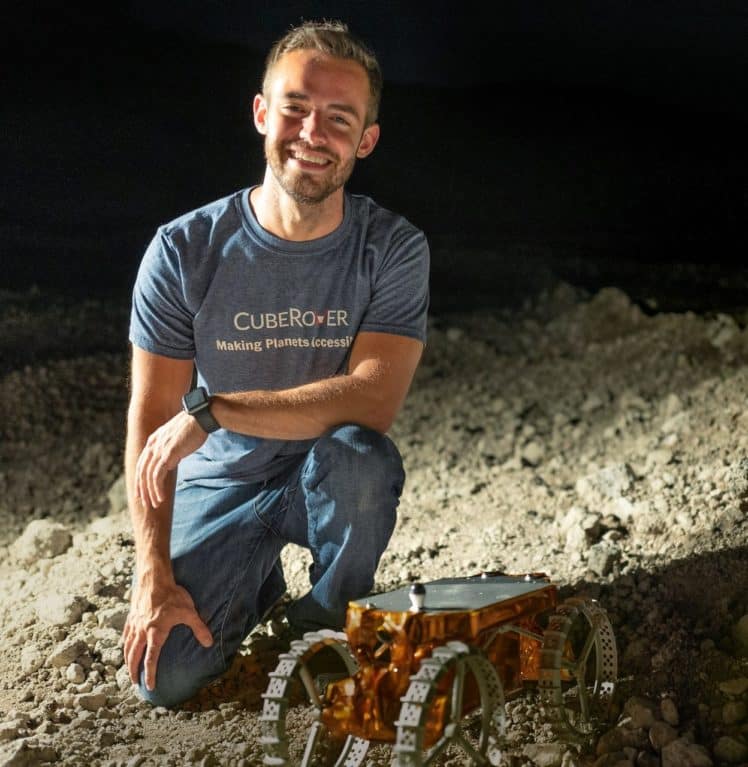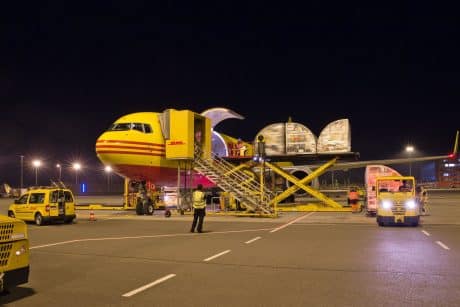There are numerous challenges involved in the design of moon exploration vehicles, says the Director of Planetary Mobility at space tech company Astrobotic. But there are incredible opportunities too.
The fascination of Michael Provenzano for space
Michael Provenzano is certain that there must be life on another planet. In fact, proving that we’re not alone in the universe is one of his driving passions. “Imagine how big that discovery would be!” he says. “Although it’s not the only reason I’m excited about working in the space industry.”
Provenzano’s fascination with space started after graduation when he watched the TV series “Cosmos,” hosted by astrophysicist Neil deGrasse Tyson. “I was looking to do something impactful,” he says. “Space was becoming an industry with the likes of SpaceX and Blue Origin, so I figured it must have a need for business people. I thought: ‘Maybe there’s something I can contribute that will be good for the human race.’”
A former Poets&Quants’ Best & Brightest MBA, Provenzano worked for a spell at Boeing on its Space Launch System, and started his own business based on space transportation. In 2017 he joined Astrobotic, a company that develops space robotics technology for lunar and planetary missions, and seeks to make space accessible to the world with a line of payload-delivering lunar landers and rovers. “By offering prices that are more affordable than traditional space missions, we’re bringing down entry barriers for any scientific group that wants to engage with the moon,” he explains. “That includes international space agencies, universities and companies. We want to become a logistics service that carries unique goods to the surface of the moon.” For example, in 2023, Astrobotic will be delivering NASA’s water-hunting rover, VIPER, to the South Pole of the moon on its Griffin lunar lander.
Designing the Astrobotic lunar rover called CubeRover
As director of Astrobotic’s Planetary Mobility team, Provenzano leads a group of engineers who are developing the world’s first and smallest commercial lunar rover, the CubeRover, along with medium and large lunar rovers MoonRanger and Polaris. “We work out what cool capabilities they should have,” he says. “Do we want them to be autonomous, or be able to survive lunar night temperatures? Do we need to make them bigger so they can go over obstacles, or down into pits or caves to search for resources?”
The CubeRover is now being tested at NASA’s Kennedy Space Center. We hope is that we can reach the lunar surface in 2023. However, that’s still to be confirmed. The big question is: After the moon, where will its next mission be? Mars? “If we can find resources on the moon to convert into rocket fuel, we can go further into the solar system,” says Provenzano. “So, Mars? Absolutely! And why stop there …?”
1
THE NUMBER OF LUNAR DAYS THAT THE FIRST VERSION OF THE CUBEROVER CAN SPEND ON THE SURFACE OF THE MOON. ONE LUNAR DAY IS AROUND 14 EARTH DAYS
199+ million
THE DOLLAR VALUE OF THE CONTRACT AWARDED TO ASTROBOTIC TO DELIVER NASA’S WATER-HUNTING ROVER, VIPER, TO THE SOUTH POLE OF THE MOON
What will the CubeRover be doing?
If you’re a scientific group that wants to go to the moon, for example, to learn more about where resources are located, you don’t need to put your technology on to a giant platform. You can put it on a small rover. The CubeRover streams live data and images. If required it fits with robotic arms and drills to take scientific samples.
How big is it?
Our CubeRovers come in different sizes, but the smallest is the size of a shoebox. Trained personnel in Astrobotic’s mission-control room in Pittsburgh, Pennsylvania control it. Our customers can tell us where to direct it. The rovers are battery-powered and fitted with solar panels, so they can recharge during the mission with energy from the sun.
What’s been your biggest design challenge?
The CubeRover is so small that it can heat up and cool down much more quickly than traditional planetary rovers. It gets really cold on the trip to the moon, and then really hot when it lands on the surface – and it’s hard to design for extreme temperatures. Also, the CubeRover has to be able to survive vibrations during launch.
What will Astrobotic’s bigger rovers, Polaris and Moon-Ranger, be doing?
We need bigger rovers to cope with rockier terrain. Polaris is about the size of a golf cart and is useful for carrying bigger instruments such as heavy drills or sampling tools. Meanwhile, MoonRanger is a collaboration between Astrobotic and Carnegie Mellon University and will fly to the moon in 2022. It can drive at relatively high speed and is completely autonomous, so it will go off on its own to look for resources outside of the lander’s Wi-Fi range.
How could we use Astrobotic technologies on Earth?
I often think about that. Elements of our technologies could be used in sectors such as mining or for military applications. But, truthfully, they’re better reserved for space.
How did you get involved in DHL’s MoonBox project?
We talked to DHL because we want to be a logistics provider too – but in space! The idea is that people can put mementos – such as a photo, a ring or an heirloom – into a DHL MoonBox, which we then deliver to the moon in a MoonPod. We have cameras on our lander which will take a picture of the MoonPod sitting on the lunar surface. We thought it was a good way to give regular people a chance to interact with the moon. — Tony Greenway
Interested in our other initiatives? Learn more.
Are you a business customer looking for a reliable logistics partner? Find out how we can make a difference for you.




